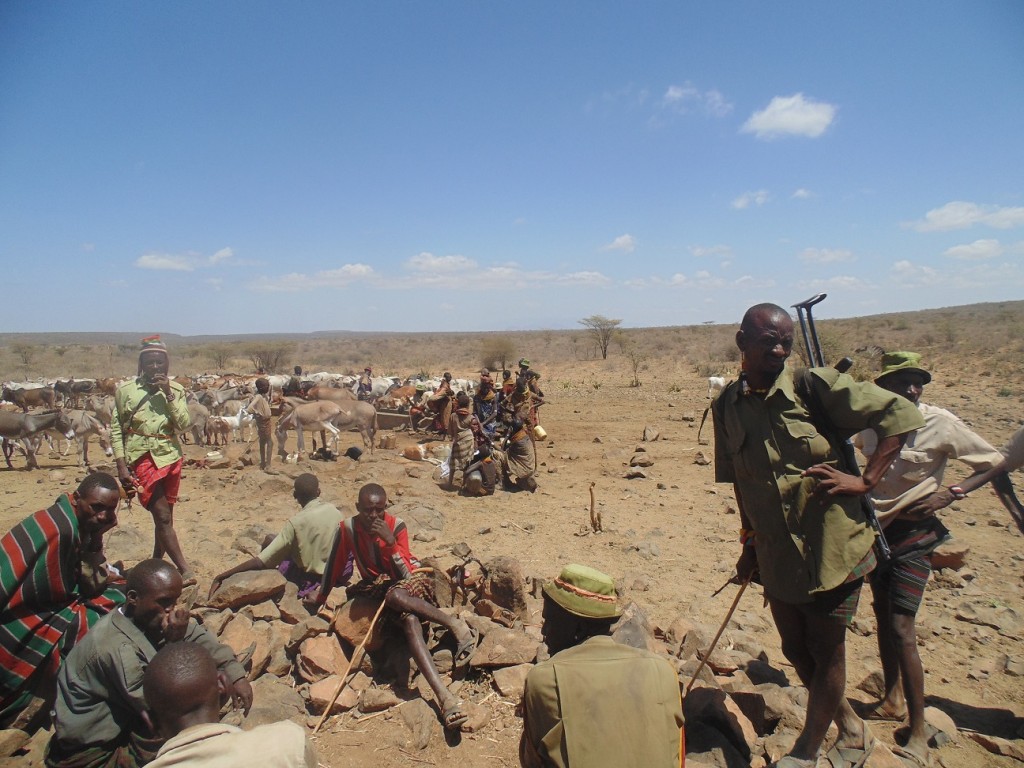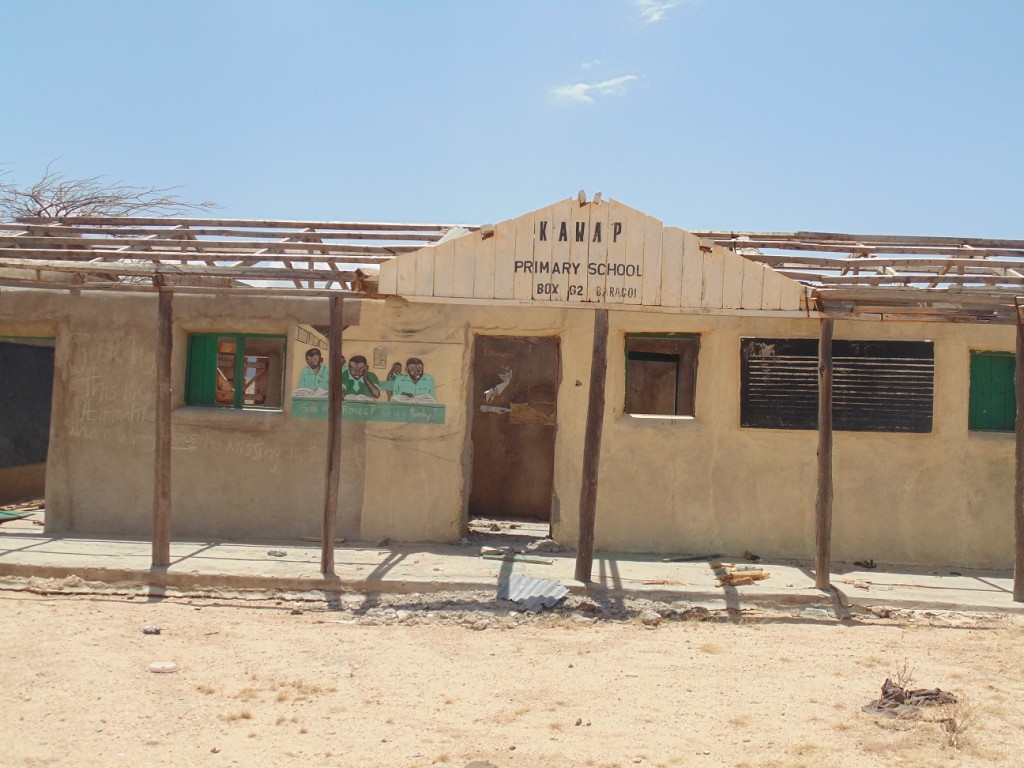by Willis Okumu
Cattle Raids and Victimhood at the Household Level: Experiences of Pastoralists Women in Northern Kenya
The culture of cattle raiding is a shared practice across the Karamoja Cluster. Pastoralists within this geographical area not only share territory but also use cattle for various significant life events such as for paying bride wealth, trade, making sacrifices, as a source of wealth and a daily means of survival. Cattle raiding was therefore an institutionalised means through which communities interacted and acquired livestock to alleviate survival crises occasioned by drought. Cattle raiding also enabled community warriors to prove their mettle by raids aimed at acquiring cattle for the payment of bride wealth. During such raids, cherished values such as braveness and reliable leadership were sought and exhibited as key to warriorhood. In the early 1970s a remarkable change in the culture of raiding started taking root. Raids became more frequent, more violent and groups of warriors acquired automatic weapons that made the organizing of raids no longer a community sanctioned affair but an event independent from the sanctioning powers of communal elders.
Automatic weapons used in cattle raids initially arrived in Samburu district through the fatal raids of Turkana Ngoroko who traversed Samburuland and made incursions among the Samburu people. The Samburu at that time defended their livestock and territory using traditional weaponry of spears, bows and arrows. Given the marginilisation of the whole of pastoralists inhabited Northern Kenya in terms of accessibility infrastructure and limited presence of state security. Local politicians from the late 1970s appealed to the then President Moi to issue government arms and ammunition to local volunteer police who were christened ‘Kenya Police Reservists’. The initial batch of reservists were recruited towards the end of 1970. They were trained by local police on shooting ranges such as Mt. Nyiro and deployed in their respective villages and grazing lands as protection against Ngoroko raiders. The unintended effect of arming locals is that it brought a new feel of power among the reservists. The power of carrying a loaded rifle and its impact on traditionally armed herders changed the nature of raids. Armed reservists increasingly used their government issued guns to support warriors from their ethnic groups during fatal raids between the Samburu and Turkana. With continued raids, victims and sense of victimhood solidified between these groups thus fueling a strong sense of revenge raids which further led to more deaths and displacement of raid victims from their homes.
Arming of police reservists by the state not only helped to solidify ethnic identities. Guns issued to reservists were seen as belonging to specific communities. Hence a communal tool for defence and aggression in raids. The use of guns in raids brought a new sense of efficiency during raids thus further propelling the demand for more guns. On the other hand the use of guns broke the institutional structure of traditional raiding which prohibited violence on children, women and the aged. Raiding using guns thus opened Turkana and Samburu households to indiscriminate gun fire during cattle raids. This further fuelled the need to acquire more weapons at the household level.
Genesis of Conflict and Solidification of Victimhood
Solidification of sense of victimhood among pastoralists’ households can be argued to have taken root since 1996. In 1996, there was a massive raid of Samburu and Rendille herders by Turkana raiders at Soito Kokoyo dam near Marti town in Samburu North sub County. The sense of victimhood by those sides can be argued to be key to never ending cycle ov violence as violence narratives are passed on from generation to generation thus burdening warrior groups with the expectation not only to to conduct raids for their contemporary purposes but also to revenge on behalf of their elder generation for past aggressions. According to Rose Learamo, a 62 year old Samburu woman from Bendera village; “Armed raiding started in the 1970s when Turkana raiders killed chief Lekuye and the Samburu reacted by fighting back. The raids have affected my household and my daily life. I lost a daughter who was killed by Turkana raiders before she got married. My brother who was a moran was also killed when they went to raid the Turkana in Natiti. Because of this conflict I have had to move all the time. In the 1970s I was living in Ldonyo Mara but I had to move to Baragoi town and later I settled here in Bendera due to insecurity”.
On the Turkana side, Adung Julia, a 72 years old woman from Nalingangor village traces the Turkana-Samburu conflict to 1996. According to her; “the conflict started when an airplane was shot down at Nachola area while carrying out a security operation to recover stolen cattle by the Turkana from the Samburu and Rendille herders. After the Turkana raiders shot down the plane, a massive security operation was carried out by paramilitary police. Security officers took away three Turkana men: Lochikiria, Aukot and Epokor. The whereabouts of these three men is unknown to date. This particular episode was the beginning of massive raids and highway attacks between the Samburu and Turkana”.
Cattle Raids at the Household Level
While raiding is indeed a male dominated affair, the impact of raids on pastoralists households are more far reaching and devastating. In Samburu North, intense raids have contributed directly to loss of lives during raids. While most raids initially take place far away from settlement areas, revenge attacks that ensue thereafter are often more organised and contribute to indiscriminate shootings in settled areas. Ekiru Lochuch a 76 years old Turkana woman recalls a Samburu raid in Naikit Amejen. During that raid her daughter Lokoro Lochuch, her son in law Loriu Lopeyok and two of their children were killed and their 300 cows and 10 camels taken by the Samburu raiders. This raid left her with no clear means of survival as she resorted to come and settle in Baragoi town where she started brewing alcohol to support her younger children. Similarly, Julieta Lekaere, a 58 years old Samburu woman from Bendera village attributed her constant migration from place to place over the last two decades to insecurity occasioned by raids between the Samburu and Turkana. On a more personal level, she lost her brother who was shot dead during a raid at Mt. Daniel near Baragoi High School. During that raid, the Lekaere family also lost their homestead which was turned into a battle field between Samburu and Turkana warriors. But more significantly the raid at Mt. Daniel led to loss of grazing areas by the family thus further endangering the survival of their family livestock.
Pastoralists’ women in Samburu North can be argued to be the main victims of cattle raids at the household level. When raids occur, women lose their sons and husbands. This is because warriors armed with modern automatic rifles increasingly organise raids away from the institutional guidance of the elders as was done four decades ago. Once warriors come back home after successful raids, revenge raids are expected from the raided community and preparations are collectively made with retired morans to defend territory and livestock. Revenge raids that take place within settled areas tend to be very indiscriminate as warriors rely on the surprise element. They lay ambush in the thickets or in the dark and launch ferocious attacks aimed at catching their victims flat footed. During these raids, children, women and the elderly are killed. Killings occasioned by indiscriminate shootings during revenge raids fuels revenge and sense of victimhood. Women happen to suffer more as they are left with the burden of raising households such violent raids which robs pastoralists of able-bodied men and livestock that they should survive on.



